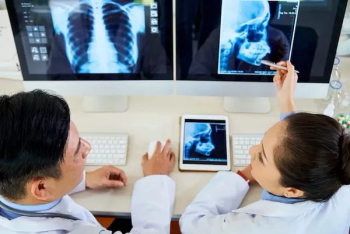
The Reading Room: Signature Signs of EVALI on CT
Michael Gotway, M.D., cardiopulmonary radiologist with the Mayo Clinic, discusses the signature signs of EVALI on CT scans in this podcast.
Lung injuries caused by vaping leave signature marks on CT scans, a follow-up study has revealed, arming radiologists with the details needed to potentially make more accurate diagnoses and help patients avoid unnecessary biopsies.
In a recently published study in
The first reports of EVALI surfaced last year from the Centers for Disease Control & Prevention. Within the first six months after this report, almost 3,000 EVALI-related hospitalization were recorded, as well as 68 confirmed deaths. Almost all patients present with complaints of shortness-of-breath, chest pain, and constitutional symptoms that can resemble viral illness. The non-specific nature of these symptoms can make an accurate diagnosis difficult.
Related Content:
Based on their findings, he said, 96 percent of patients exhibited multi-focal or diffuse ground-glass opacities and consolidation that involves most or all lobes bilaterally and could involve mild interlobular septal thickening and subpleural sparing. As the illness evolves, imaging findings can suggest mild architectural distortion, intralobular lines, lobular distortion, and traction bronchiectasis.
These findings can be particularly helpful, he said, when providers are imaging younger patients with chest pain and shortness-of-breath. In those cases, a diagnosis of EVALI should be strongly considered.
Even though patients may be reticent to admit they are vaping, he said, if a radiologist recognizes one of these patterns on CT, he or she can advise the clinician, potentially leading to a nicotine metabolite test and further questions about exposure. Employing that approach could help patients avoid the invasiveness, time, expense, and risk associated with unnecessary biopsies.
“These radiological findings will be especially beneficial to physicians to help them determine potentially less invasive treatment options,” Gotway said. “We could potentially make that diagnosis non-invasively through cooperation with our clinical colleagues. By alerting them to a scan pattern that is suggestive of the possibility of EVALI, we may actually save patients from having to meet a surgeon.”
Newsletter
Stay at the forefront of radiology with the Diagnostic Imaging newsletter, delivering the latest news, clinical insights, and imaging advancements for today’s radiologists.




